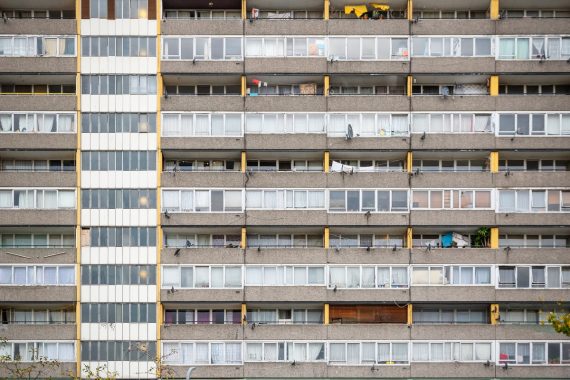GPs in deprived areas able to offer significantly less patient contact, finds study

GP practices in more socioeconomically deprived areas would need support to increase patient contact by 14% in order to reach parity with more affluent areas, according to new research.
The study, published last week, used records from 150 GP practices across more than 770,000 patients, and showed that patients in more deprived areas ‘have less contact time with their practices’ but ‘only when viewed in relation to morbidity’.
The researchers concluded these practices would require a ‘significant increase in resources’ in order to deliver the equivalent level of care as practices in less deprived areas.
Morbidity was measured by the number of long-term conditions (LTCs) recorded for the patients, and when comparing the deprived areas with affluent areas, there was a ‘consistent and striking pattern’.
Data was analysed for the period 2013 to 2016 and was obtained from 80 practices with Scottish Index of Multiple Deprivation scores one to five, and from 70 practices with scores six to 10.
The study only covered face-to-face appointments, with any healthcare professional, and patients who had made at least one appointment.
Across all patients, the difference in contacts and contact time was small, with patients in more socioeconomically (SE) deprived areas receiving 11.8 contacts over the three years, compared with 11.4 contacts for more affluent areas.
The researchers found that the differences by age and sex were also small. However, when stratified by the number of long-term conditions, the data showed that practices in more deprived areas ‘delivered significantly less contact time’.
The results of the study said: ‘The smallest increase required is 7.2%, for patients with the most complex needs, with five or more LTCs. When combined, these adjustments add up to an increase in contact time required in SE deprived areas of 14.4%.’
For patients with three or four LTCs, there was a 38-minute gap in average GP contact time between the two types of areas over the three years.
The researchers concluded: ‘If GPs in more SE deprived areas were to give an equal amount of direct contact time to patients with the same level of need served by GPs in less SE deprived areas, this would require a 14% increase in patient contact time.
‘This represents a significant unmet need, supporting the case for redistribution of resources to tackle the inverse care law.’
Patients in the least affluent areas are ‘losing out’, and this study adds to evidence that GP care provision in the UK is ‘not equitably distributed across practices’, according to the authors.
They added: ‘GP provision in SE deprived areas needs to be better supported to deliver uniform care to patients with the same level of need across the UK.
‘The analysis from this paper suggests that measuring LTCs and funding accordingly would make a significant contribution to achieving this aim.’
Last year, NHS England urged ICBs to prioritise GP spending in areas with deprivation, inequalities and the ‘most serious’ recruitment challenges.
Pulse’s major ‘Lost Practices’ investigation last year revealed that 474 GP surgeries across the UK have closed in the past nine years without being replaced, with small practices on lower funding in more deprived areas most likely to be affected.
Related Articles
READERS' COMMENTS [4]
Please note, only GPs are permitted to add comments to articles










Remind me, when was the Carr-Hill formula due to be reviewed….?
Boomla’s research from the mid 2010s still holds true – patients in deprived areas consult significantly more from ages 40-80 than those in least deprived areas. Even within the same area there are significant differences as some practices put up fewer barriers to access to complex patients or have a reputation as being ‘good with’ certain cohorts of patients.
Sweden allocates primary care capitation according to individual risk scores / need. This would be an answer that would answer the fears of those with complex patients in both deprived and wealthy areas.
https://qmro.qmul.ac.uk/xmlui/bitstream/handle/123456789/28864/Boomla%20GP%20funding%20formula%20masks%20major%20inequalities%20for%20practices%20in%20deprived%20areas%202014%20Published.pdf?sequence=5&isAllowed=y
GPs in deprived areas suffer more than in affluent areas. The patients are more demanding, consult more, with higher disease prevalence and they do not use other services. The do not have cars to access extended hours, do not respond to invitations affecting targets and having to do extra work to get people some of whom are not bothered to come in. Thanks Simon, it appears Sweden has given what sounds like a feasible solution.
Yes, Not on Your Nelly, so right: did no GPs object to Carr-Hill formula at the time it was introduced? Or
only those with the weakest voices objected? Perhaps it suited some GPs
who did well out of it? Not very democratic eh.
Was this meant to help the poorest areas, or make them poorer still.
Didn’t this kind of financial resourcing, funding ‘carry on’ happen to schools, education too,
and probably other professional groups, trying to do a decent job in under-resourced circumstances.
Shame on the formula, and those who think up this sort of thing.